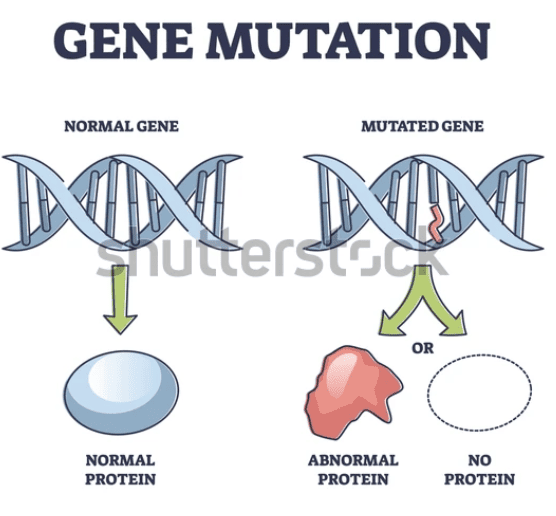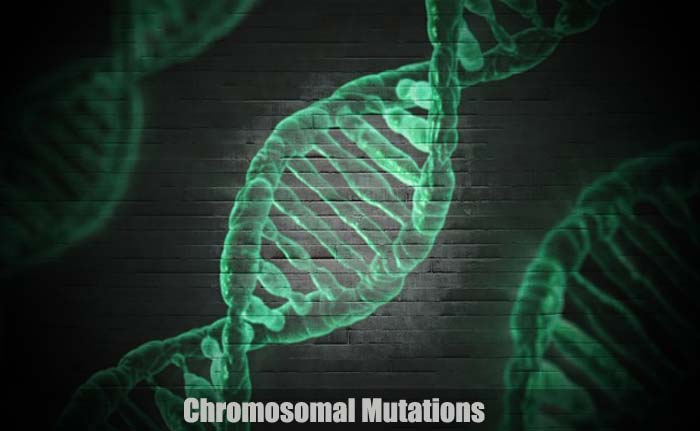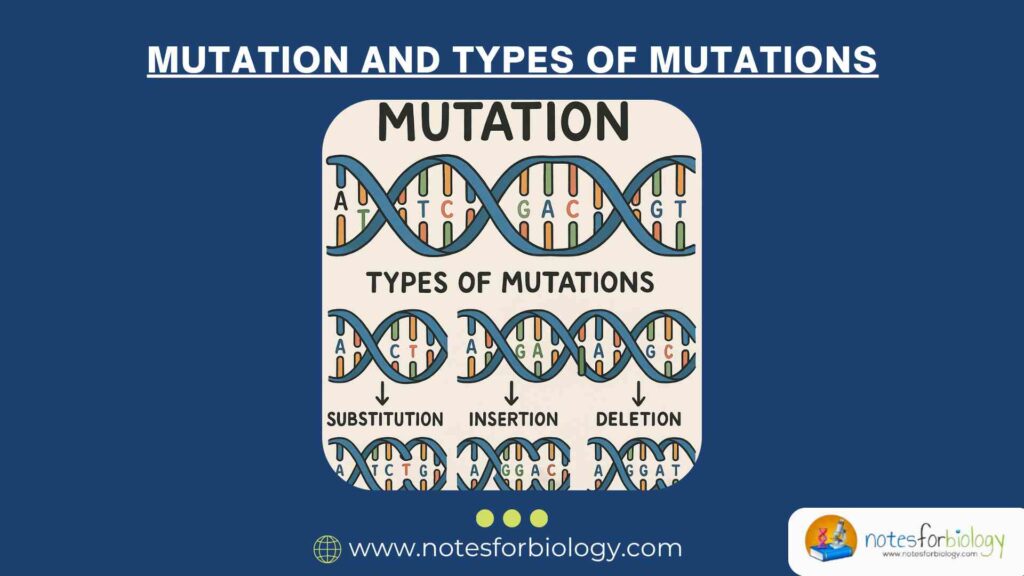In the fascinating realm of genetics and molecular biology, mutations occupy a central role. A mutation is a permanent alteration in the DNA sequence of an organism’s genome. Since DNA serves as the carrier of genetic information essential for the structure, function, and regulation of an organism’s cells, any changes in its sequence can potentially alter biological traits and functions. Mutations can occur spontaneously during cellular processes such as DNA replication or can be induced by environmental factors like radiation, chemicals, or biological agents. While some mutations remain silent, having no noticeable effect on an organism, others can lead to significant genetic disorders or offer evolutionary advantages.
Understanding mutation is crucial not only because they contribute to genetic diseases but also because they drive the process of evolution, enabling species to adapt and survive in changing environments. This article provides a comprehensive explanation of what mutations are, the different types that exist, their causes, effects, and biological significance.
Summary of Mutation
- Mutation is a change in DNA sequence caused naturally or by mutagens.
- Types include small gene mutation (like substitutions) and large chromosomal mutation (like deletions and translocations).
- Mutations can be neutral, harmful, or beneficial, affecting traits, health, and evolution.
Table of Contents
Meaning of Mutation
A mutation is a change in the nucleotide sequence of an organism’s DNA. DNA is made up of four types of nucleotide bases: adenine (A), thymine (T), cytosine (C), and guanine (G). The order of these nucleotides determines the genetic instructions used for the development and functioning of living organisms.
Mutations can range from a single base pair change to alterations affecting large segments of a chromosome. Depending on where and how they occur, mutations can have varying effects on the organism. Some mutations are harmless, while others can lead to malfunctioning proteins, resulting in disease or developmental abnormalities.
Causes of Mutation
Mutations can be classified based on their causes into spontaneous mutation and induced mutation.
Spontaneous Mutation
Spontaneous mutation arise naturally without the influence of external agents. These typically occur due to errors in DNA replication, a process in which cells duplicate their genetic material before dividing. Although cells possess proofreading mechanisms to correct most replication errors, occasional mistakes can escape correction, leading to permanent changes in the DNA sequence.
Additionally, spontaneous mutation can result from natural chemical changes within the DNA. For example, deamination involves the loss of an amino group from a nucleotide, while tautomeric shifts involve the rearrangement of hydrogen atoms, potentially causing improper base pairing.
Induced Mutation
Induced mutation occur due to exposure to environmental factors known as mutagens. These can be physical, chemical, or biological in nature.
- Physical mutagens include various forms of radiation. Ultraviolet (UV) radiation from sunlight can cause thymine bases in DNA to bond incorrectly, creating thymine dimers that disrupt normal replication. High-energy radiation such as X-rays and gamma rays can break DNA strands, leading to large-scale genetic changes.
- Chemical mutagens encompass a wide range of substances that can interact with DNA. Alkylating agents can modify nucleotide bases, base analogs can replace normal bases and cause errors during replication, and intercalating agents can insert themselves between DNA bases, distorting the double helix structure.
- Biological mutagens include certain viruses and bacteria. These organisms can insert their genetic material into host DNA or interfere with cellular processes, potentially inducing mutations.
Types of Mutations
Mutations can be classified in several ways based on the nature of the genetic change, the effect on the protein product, or the scale of the DNA segment involved.
Types of Mutation Based on Molecular Change
Point Mutation
A point mutation involves a change in a single nucleotide pair within the DNA sequence. This type of mutation can be further categorized into substitutions, insertions, and deletions.
Substitution
One nucleotide is replaced by another. Substitutions can be further divided into:
- Silent Mutation: The change does not alter the amino acid sequence due to the redundancy in the genetic code.
- Missense Mutation: The substitution results in a different amino acid, potentially altering the function of the resulting protein.
- Nonsense Mutation: The substitution creates a premature stop codon, leading to an incomplete, usually nonfunctional, protein.
Insertion
An extra nucleotide is added to the DNA sequence, which can disrupt the reading frame if not in multiples of three.
Deletion
A nucleotide is removed from the DNA sequence, which can also cause a frameshift if not in multiples of three.
Repeat Expansion
In this type of mutation, a sequence of nucleotides is repeated multiple times, expanding the length of the DNA sequence. This can cause disorders such as Huntington’s disease and fragile X syndrome.
Frameshift Mutation
Occurs when insertions or deletions change the reading frame of the gene. Since the genetic code is read in triplets, adding or removing nucleotides alters every codon after the point of mutation. This typically results in a nonfunctional protein.
Types of Mutation Based on Effect on Protein Function
Loss-of-Function Mutation
A loss-of-function mutation reduces or eliminates the activity of the gene product. These mutations can lead to the production of a nonfunctional or unstable protein. Most loss-of-function mutations are recessive, meaning that both copies of a gene must be affected for the associated trait or disorder to manifest.
Gain-of-Function Mutation
A gain-of-function mutation results in a gene product with enhanced activity, a new function, or abnormal expression patterns. These mutations are typically dominant, as a single altered gene copy can produce a protein with excessive or novel activity.
Dominant-Negative Mutation
In a dominant-negative mutation, the altered gene product interferes with the function of the normal protein produced by the other gene copy. This type of mutation can cause defective cellular processes even if one functional gene copy remains.
Types of Mutation Based on Scale of DNA Change
Gene Mutation

Gene mutations involve small-scale changes affecting a single gene. These include point mutations, insertions, deletions, frameshift mutations, and repeat expansions. The consequences of gene mutations can range from minor to severe, depending on the nature and position of the mutation within the gene.
Chromosomal Mutation

Chromosomal mutations involve large-scale alterations affecting significant portions of a chromosome. These mutation can disrupt multiple genes and often have substantial effects on an organism’s development and health.
- A deletion mutation occurs when a segment of a chromosome is lost, leading to the absence of several genes.
- A duplication mutation involves the repetition of a chromosomal segment, resulting in extra genetic material.
- An inversion mutation occurs when a chromosome segment breaks off, rotates, and reattaches in the reverse direction. This can disrupt gene sequences or regulatory elements.
- A translocation mutation involves the exchange of segments between non-homologous chromosomes. Certain types of cancer, such as chronic myeloid leukemia, are associated with specific chromosomal translocations.
- An insertion mutation can also occur at the chromosomal level when a fragment from one chromosome is inserted into another, disrupting normal gene sequences and regulatory regions.
Effects of Gene and Chromosomal Mutation
Gene mutations typically affect individual proteins and their functions, potentially leading to diseases like cystic fibrosis, sickle cell anemia, or Tay-Sachs disease.
Chromosomal mutations, involving multiple genes, often have broader effects. They can cause developmental syndromes, congenital malformations, infertility, or cancers. For example, Down syndrome results from a duplication of an entire chromosome 21 (trisomy 21).
Effects of Mutation
Mutations can have a wide range of effects on an organism. They may be neutral, beneficial, or harmful, depending on the context and the genes involved.
Neutral Mutation
Neutral mutations typically do not influence an organism’s phenotype or fitness. These mutations might occur in non-coding regions of the genome or lead to silent mutations that do not change the amino acid sequence of proteins.
Beneficial Mutation
Beneficial mutations confer an advantage in certain environmental conditions. Although rare, these mutations can enhance survival, reproductive success, or adaptability. Over generations, beneficial mutations can accumulate in populations, contributing to evolutionary change.
Harmful Mutation
Harmful mutations disrupt normal biological functions, potentially leading to genetic disorders, developmental abnormalities, or cancer. The severity of the consequences often depends on the nature of the mutation and whether it affects a critical gene involved in essential cellular processes.
Examples of Mutation in Human Disease
Several human genetic disorders are directly caused by specific mutations. Cystic fibrosis is commonly the result of a deletion of three nucleotides in the CFTR gene, which leads to the loss of a single amino acid (phenylalanine) at position 508. This mutation disrupts the normal function of the CFTR protein.
Sickle cell anemia is caused by a missense mutation in the HBB gene, where a single nucleotide change substitutes valine for glutamic acid in the beta-globin chain of hemoglobin. This alteration leads to the production of abnormal hemoglobin molecules that cause red blood cells to adopt a sickle shape.
Huntington’s disease results from a repeat expansion mutation in the HTT gene, where an abnormal repetition of CAG trinucleotides leads to progressive neurodegeneration.
Tay-Sachs disease typically occurs due to a frameshift mutation in the HEXA gene, which eliminates the production of a vital enzyme responsible for breaking down certain fatty substances in the brain.
Role of Mutation in Evolution
Mutations are the ultimate source of genetic variation in populations. Natural selection acts upon this variation, favoring traits that enhance an organism’s survival and reproduction. Over generations, beneficial mutations can accumulate, leading to the emergence of new adaptations and even new species.Without mutations, evolution would stagnate, as there would be no genetic diversity for natural selection to act upon. Mutations, therefore, drive the process of evolution by introducing new genetic traits into populations.
Evolution is the process of change in the genetic composition of a population over generations. Mutations provide the raw material for evolution by introducing new genetic variations. Here’s how:
- Source of Genetic Variation – Mutations introduce new alleles, increasing diversity in a population.
- Natural Selection – Beneficial mutations may enhance survival and reproduction, becoming more common over generations (e.g., antibiotic resistance in bacteria).
- Genetic Drift – Random mutations may become fixed in small populations due to chance.
- Adaptation – Mutations can lead to new traits that help organisms adapt to changing environments (e.g., lactose tolerance in humans).
- Speciation – Accumulation of mutations over time can lead to reproductive isolation and the formation of new species.
Mutation Detection and Applications
Advancements in molecular biology have led to the development of sophisticated techniques for detecting and studying mutation. Methods such as polymerase chain reaction (PCR), DNA sequencing, gel electrophoresis, and microarray analysis allow researchers to identify specific mutation, understand their effects, and develop targeted treatments. These techniques have applications in medical diagnostics, genetic counseling, cancer research, biotechnology, and crop improvement. Additionally, gene therapy, which aims to correct defective genes, relies on the accurate detection and characterization of mutations.
Mutation detection involves identifying changes in DNA sequences. It is crucial in fields like medical genetics, evolutionary biology, and biotechnology.
Mutation Detection in Medical Genetics
In medical genetics, mutation detection is vital for diagnosing and managing inherited diseases like cystic fibrosis, sickle cell anemia, and certain cancers. Identifying mutations allows doctors to confirm diagnoses, assess disease risk, and select suitable treatments. For example, detecting BRCA1 and BRCA2 mutations helps evaluate breast and ovarian cancer risks. It’s also important in pharmacogenomics, where it guides personalized medicine by predicting how a patient will respond to specific drugs.
Mutation Detection in Evolutionary Biology
In evolutionary biology, mutation detection helps scientists understand how species change and adapt over time. Mutations create genetic variation, which drives evolution. By studying mutation patterns in different organisms, researchers trace evolutionary relationships and uncover the genetic basis of adaptation. For example, analyzing ancient and modern DNA reveals how certain traits emerged due to environmental pressures and natural selection.
Mutation Detection in Biotechnology
In biotechnology, mutation detection improves products and processes in fields like agriculture and medicine. In crop and animal breeding, it helps develop varieties with desirable traits such as disease resistance and higher yields. In industrial biotechnology, it identifies useful mutations in microorganisms for producing antibiotics, enzymes, and biofuels. It also ensures accuracy in gene editing projects by confirming successful genetic modifications.
Conclusion
Mutations are a fundamental aspect of biology, contributing to both genetic diversity and disease. While some mutations are harmful, leading to genetic disorders and cancer, others are neutral or even beneficial, providing the raw material for evolution. By classifying mutations based on molecular change, protein function, and the scale of DNA affected, scientists can better understand their consequences and applications. Modern technologies have enhanced our ability to detect, study, and potentially correct mutations, offering promising avenues for treating genetic diseases and improving human health.
Understanding mutations not only deepens our knowledge of life’s molecular mechanisms but also provides critical insights into medicine, evolution, and biotechnology.
Frequently Asked Questions (FAQ)
What is a Mutation?
A mutation is a permanent change in the DNA sequence of an organism, affecting a single base, a gene segment, or entire chromosomes, which can alter traits, cause disease, or have no effect.
What causes mutations?
Mutations can happen naturally during DNA replication or be caused by external mutagens like UV radiation, chemicals, viruses, and ionizing radiation, leading to genetic changes.
How are mutations classified?
Mutations are classified by the type of change (like point, insertion, deletion) and by their effect on proteins (silent, missense, or nonsense), to understand their impact on traits.




